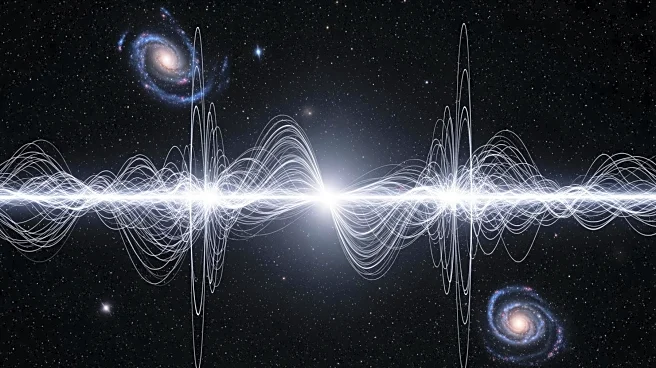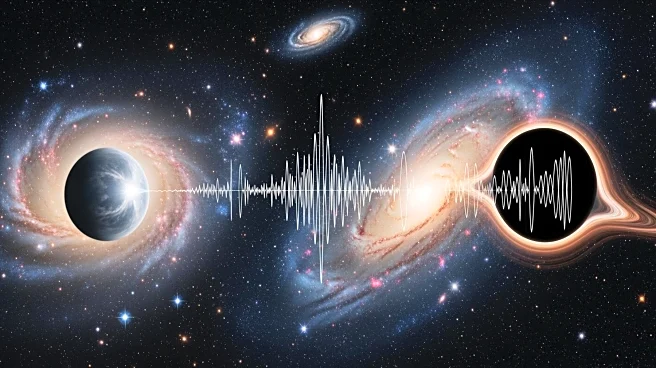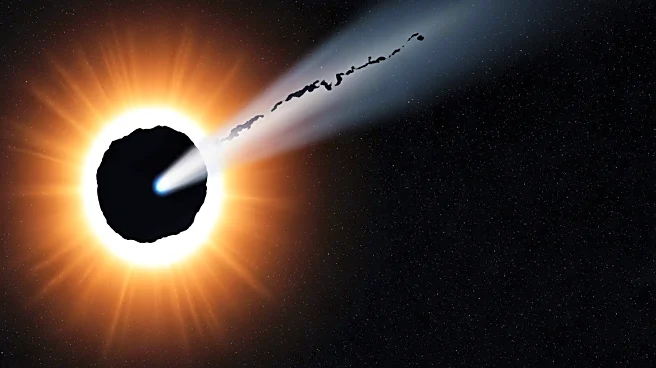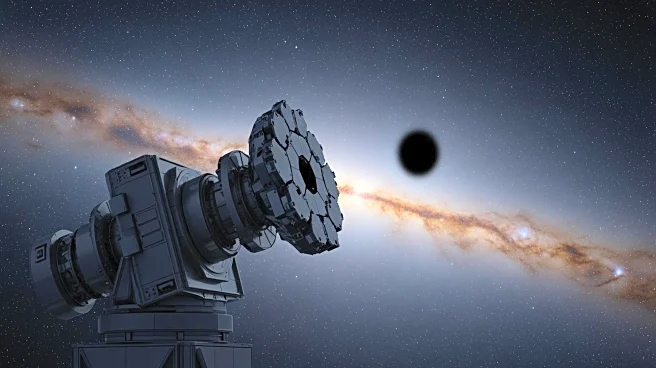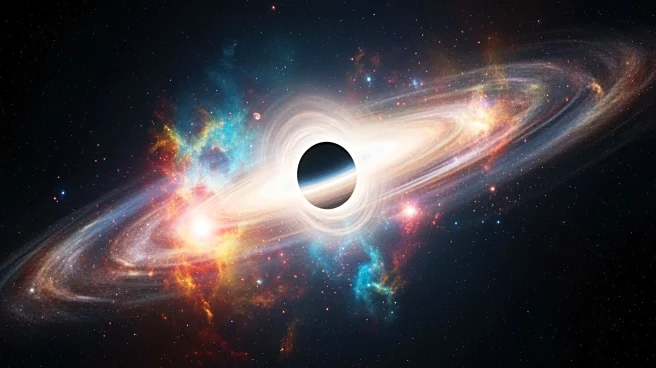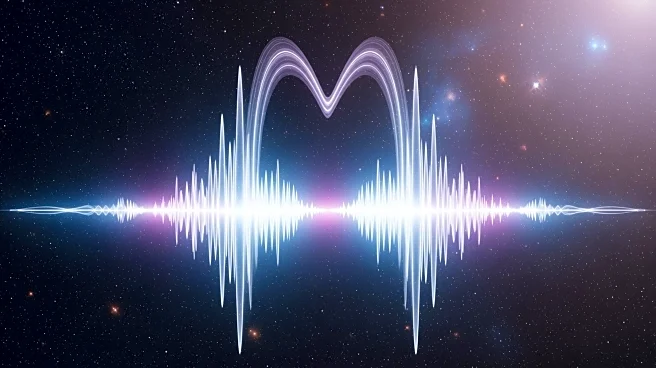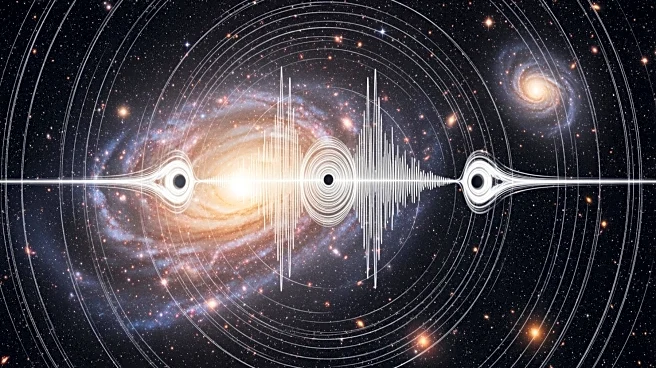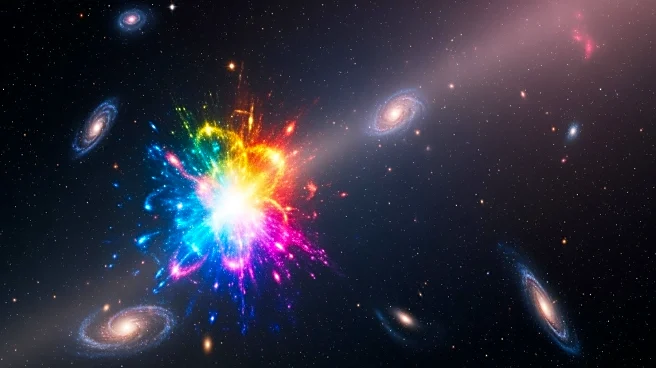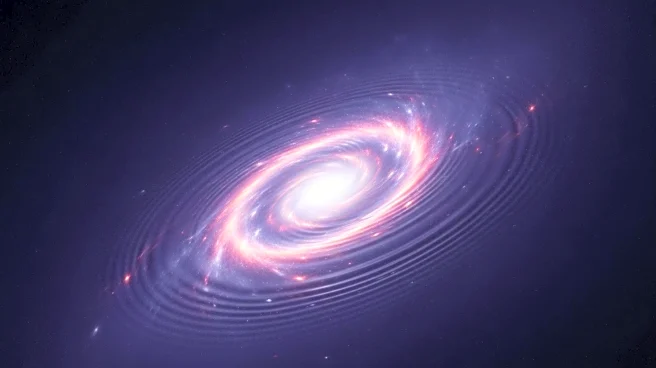What's Happening?
Astronomers have detected potential nanohertz gravitational waves through pulsar signals, suggesting the presence of extremely low-frequency waves moving through the universe. The findings, reported by
international pulsar timing array collaborations, could be due to overlapping waves from distant sources or a nearby pair of supermassive black holes. Researchers Hideki Asada and Shun Yamamoto propose a method to distinguish these sources by analyzing 'beat' effects in pulsar signals. Their approach aims to identify the origin of these waves, contributing to the understanding of cosmic phenomena.
Why It's Important?
The detection of nanohertz gravitational waves is a significant advancement in astrophysics, offering insights into the universe's structure and behavior. It could lead to a deeper understanding of cosmic inflation and galaxy mergers, which are potential sources of these waves. This research enhances the ability to study spacetime and gravitational interactions, potentially impacting theories of cosmology and the evolution of the universe. It also demonstrates the utility of pulsars as tools for exploring cosmic phenomena, highlighting their role in advancing scientific knowledge.
What's Next?
Further research will focus on confirming the detection of these waves and pinpointing their origin. If confirmed, scientists will explore whether the waves result from cosmic inflation or supermassive black hole binaries. This could lead to new discoveries about the early universe and the dynamics of galaxy mergers. The development of more sensitive instruments and methods will be crucial in advancing this field of study.
Beyond the Headlines
The study of gravitational waves also has implications for understanding the fundamental nature of spacetime and the forces that govern the universe. It challenges existing models and encourages the development of new theories that integrate gravitational wave data with other cosmic observations.
